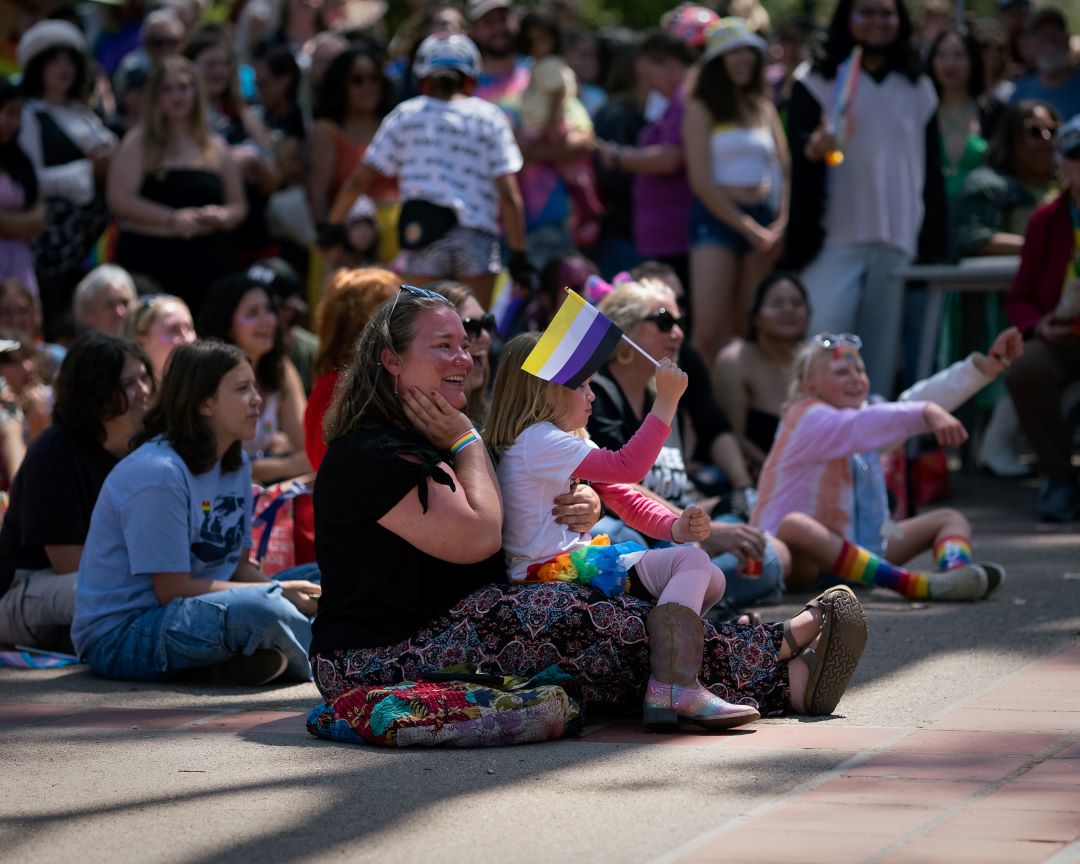While traditionally Central Coast Pride has been an annual, volunteer or contractor led event, the Gala Pride and Diversity Center took strides this year to incorporate their directors, eventually building a standing committee that ensured San Luis Obispo Pride would become a year-round program that would not fade after June.
“I’m really excited about that change as someone that loves logistics but also someone that really grew up here wanting more support and not having it back in the ‘80s and the ‘90s,” JBird, the Gala’s director of operations said.
“Seeing how much our reach is expanding is just amazing, especially this year of all years where our resilience as a community is so, so important.”
It is through this year-long program that Gala has had space to focus on more adequate funding, sponsorships and outreach for the community.
This year, Gala has worked to diversify the locations and quantity of their 2024 Pride events to foster safe, community-driven spaces for celebration and attract people of all walks of life. They have also focused on diversifying their messaging according to Serrin Ruggles, Gala’s director of programming.
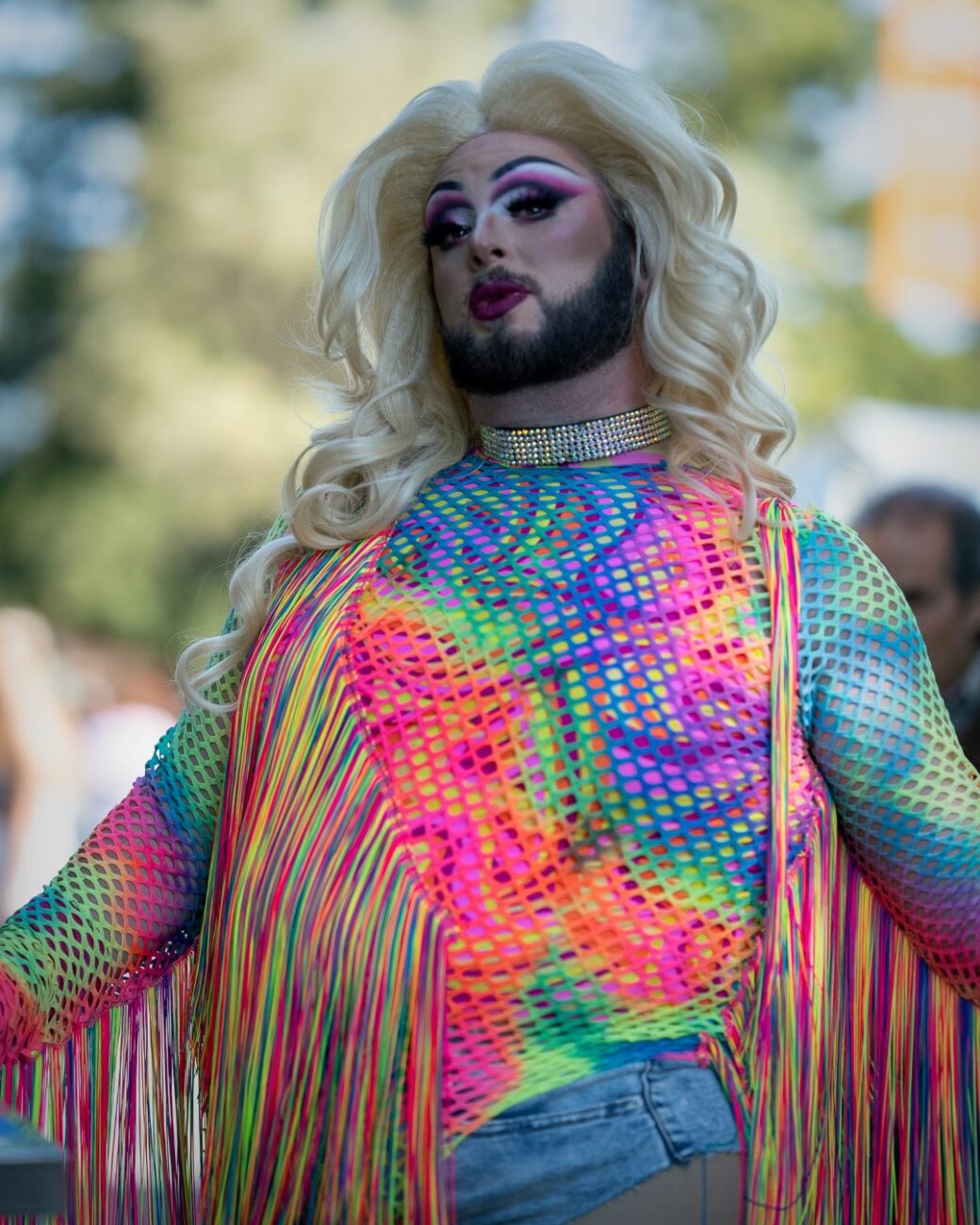
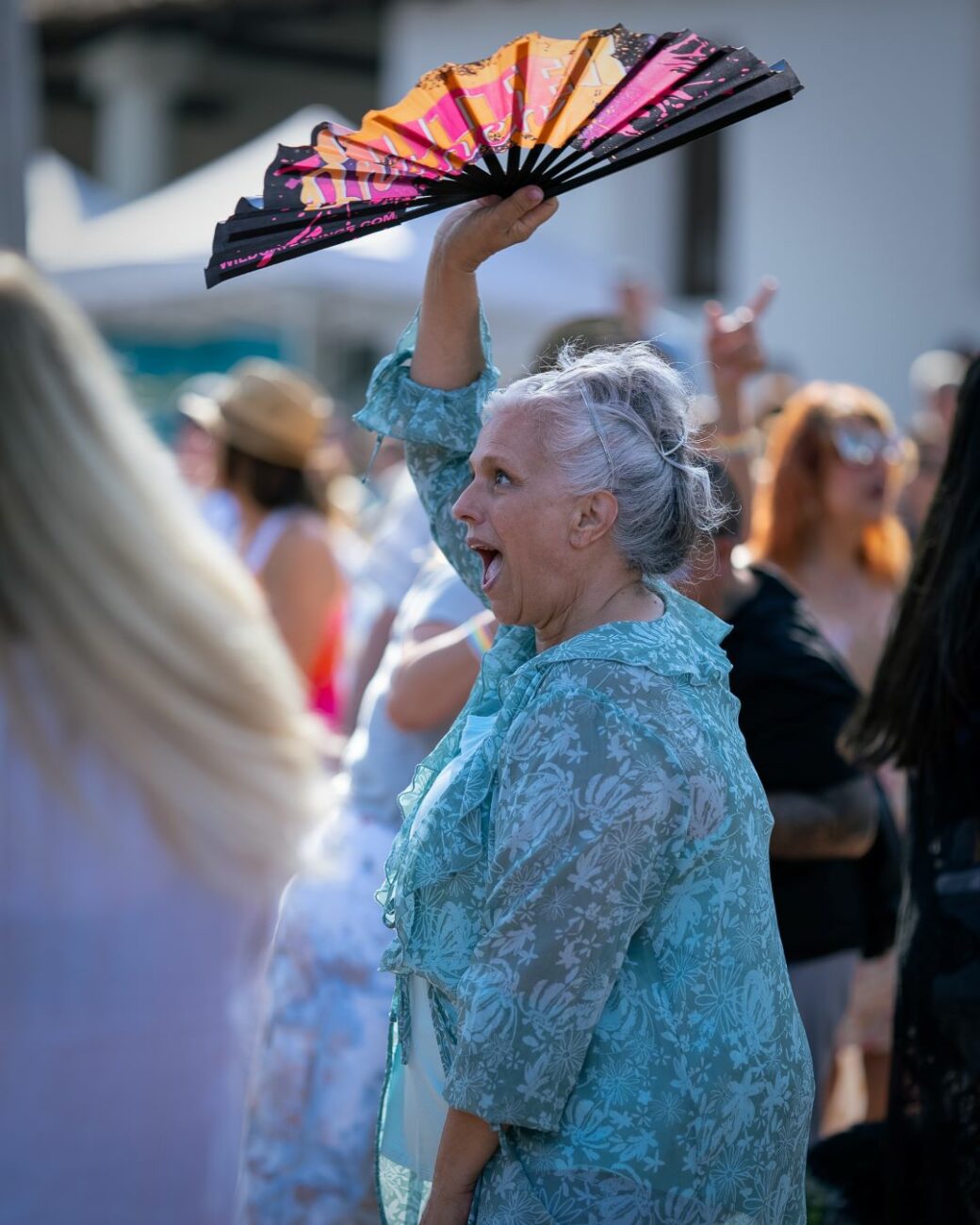
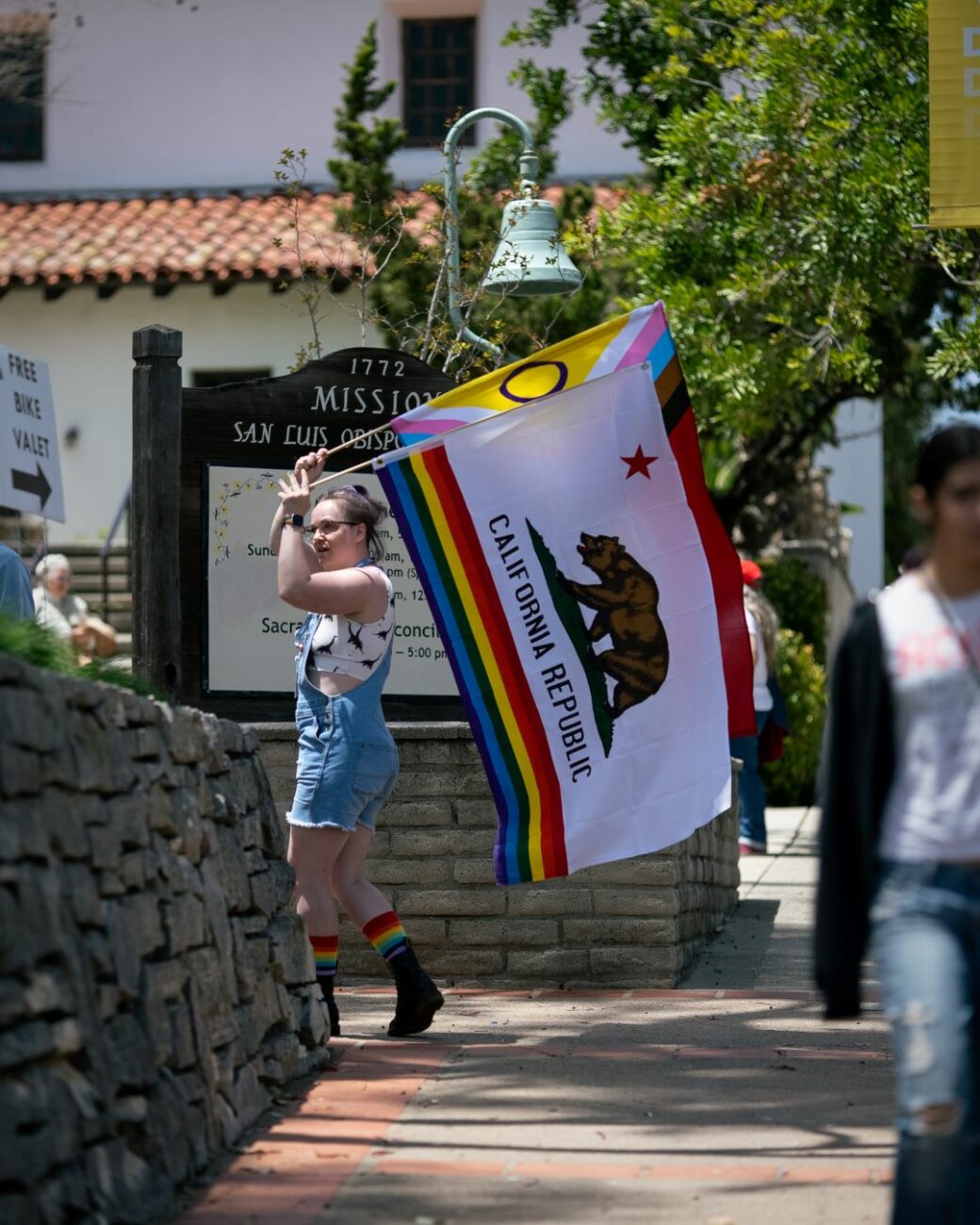
“Our main Pride events are very celebratory, they’re very fun,” Ruggles said. “But we wanted to highlight the Action & Activism team that had started last year and had a wonderful speaker session in front of the courthouse last year.”
Action & Activism, Tabling & Outreach and Education committees chairperson and director of photography for this year’s Pride festival, Mark Santos organized My Pride is Political, an event held on May 10 at The Bunker that gave space to Queer and Trans BIPOC.
National Association for the Advancement of Colored People (NAACP) San Luis Obispo County president Tobin Johnson, Cal Poly Drag Club vice president and biochemistry senior Jaenine Santos along with community members Leo and Willow spoke about the intersection of experiences of LGBTQ+ people and people of color, leaning into the local lens.
“Speaking frankly, the systemic abuse that we all experience at the hands of white supremacy, as it is in the states, and patriarchal violence often gets recycled onto others; especially in communities of color,” Santos said. “This has the often unintended effect of communities proliferating harm onto themselves. So, in creating this event, I wanted to give queer folks of color the space to speak on such things, or to simply tell their story. To name the settler-colonial violence we all experience and participate in, simultaneously.”
The push for an event like this one, as Santos said, was to not only ensure Queer and Trans BIPOC had a platform to share their voice, but also for their community to hear their name and see their face.
“Queer liberation is inextricably tied to all of our liberation, so the audience and the speakers both participated in holding space for discussion,” Santos said.
As the night came to a close, talk about making it a quarterly event flowed from community member to community member.
“That’s the kind of thing that I’m really excited about,” Ruggles said
“Yes, we have all this really fun stuff, but we also have room for these really serious conversations that need to be happening especially since it’s an election year.”
A keener focus on accessibility has also come to the forefront of more recent years’ Pride events.
Pointing to how the Action & Activism team turned into My Pride is Political this year, as Ruggles said, “we’re extending more of an open hand and explicit invitation to people with intersecting identities within our community that don’t always feel represented by mainstream queer culture and very intentionally making that space there as well as in the rest of our events.”
It’s with these intentional strides that Gala has thoughtfully asked people to speak or perform at events, with accessibility and comfort always considered.
Physical accessibility remains at the forefront of Ruggles’ mind, and with the location of Pride in the Park moved from Laguna Lake Park to Meadow Park, Gala broadened their inclusivity and increased opportunities for community members who may use a mobility aid to interact with the event’s space.
This thoughtful focus on inclusivity speaks not only to Gala’s mission to support, empower and celebrate the local LGBTQ+ community, but also to many of the board member’s personal upbringings and past challenges, finding safe and supportive spaces to be themselves.
Born in SLO but raised in North San Luis Obispo County, JBird noted that finding support as a queer child was close to impossible.
“Anytime I did try to find resources I would get redirected into a space that would make me feel shameful about myself and that was a challenge in and of itself,” she said.
Many of her peers were subject to violence and threats simply due to their natural identity.
But upon discovering the world of global community theater and quickly getting involved, JBird found it to be the closest equivalent of queer resources at the time. Even so, being a part of that community was a struggle for her at times, with many people outwardly against the few gay members.
“Being around that constant judgment from some of those members was hard. It would cause me to believe I never could be safe coming out because of the judgment I was seeing,” JBird said.
But there were specific individuals who were beacons of light amidst the clouds of hatred. One man in particular, as she recalled, followed her throughout her performance career, attending every one of her shows with a rose outstretched in his hand.
“He was so supportive of the big picture of my life and my efforts of being in this world, and I think he saw me for who I was way before I did,” JBird said.
As an adult, she tried to move back to North San Luis Obispo County for some years, but was met with that unrelenting shame she grew up with.
“I felt like I was being carefully watched by my neighbors and if I was too out about who I was then I would become a target,” JBird said.
“It wasn’t until I moved to South County a few years ago that I started feeling more comfortable being me. And of course, taking on this job was a really strong choice to be more out than I have ever been in my life.”
Granted the space to live and blossom in a more accepting area, JBird has focused her efforts on Gala, which over the years has grown its youth teams and expanded its reach to North San Luis Obispo County cities such as Atascadero, Paso Robles and Templeton, ensuring queer people there feel seen as well.
Ruggles too, having moved to San Luis Obispo when they were five years old, is proud that Gala created the Facebook page known as Little Queer Paso, which has been instrumental in bringing people together.
“Before that Facebook group and youth group, the number one thing that I would hear from North County is, ‘I think that I’m the only queer person there’ and ‘I feel so alone,’” Ruggles said. “Now there’s a community for people to tap into.”
Recounting the feedback she has received from family and friends who are taking advantage of those spaces, JBird said, “It makes my inner 13-year-old self just cry happy tears knowing that there’s space that I didn’t have.”
But while San Luis Obispo County currently has the most inclusive and accepting space that JBird and Ruggles have seen in Central Coast history, they also pointed out that the map has remained the same. They expressed that it’s easier to establish LGBTQ+ programs and events in San Luis Obispo and around coastal cities, while accessibility challenges remain in South San Luis Obispo County cities like Arroyo Grande, Grover and Santa Maria.
As Ruggles suggests, breaking through the barriers in North San Luis Obispo County remains next to impossible. They also said there is growing concern regarding how non-discrimination laws are applied there, especially towards those who are transgender.
“For our transgender kids, I think that the world in general has become so incredibly hostile that we have to work double, triple overtime just to make space for them and there’s certainly places where that’s easier,” Ruggles said.
“Our trans kids in North County are at risk every single day from not only their fellow peers but the school system itself, which does not protect them.”
Currently, it is a double-edged sword as Ruggles detailed. More people are making an effort to support trans youth, but there has been an exponential increase in hatred and violence towards them as well.
It is with events like the annual Gala Pride Month, that maintains these safe spaces across San Luis Obispo and fosters community connection, so at least one individual can feel they are “not just welcomed but loved and embraced at pride.”
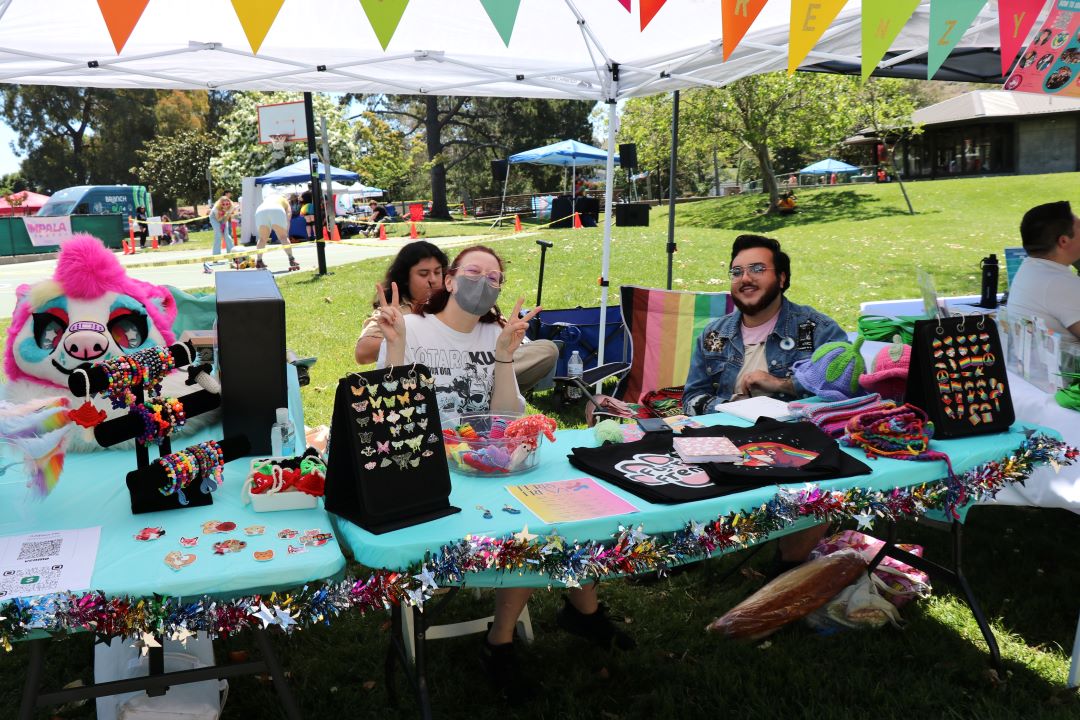

“Come with an open heart and be ready to be impressed,” JBird said, calling anyone and everyone to participate in the diverse selection of upcoming events.
“Whether it’s someone coming in as an ally or a community member, this is a space to be connected, to look back at history, to accept where we’re going and to really accept where we came from. The focus here is to build our resilience and connection as a community.”
The notion that Pride is for everyone is reverberated through the crowds of each event, with community members young and old meeting as one supportive entity. There are parents with their young children by their sides, entire families enjoying days of celebration and people in their 70s and 80s experiencing their first pride, having come to terms with themselves.
“After leaving my first pride,” Ruggles said, “I hadn’t realized before how much more I could be loved and how much more of me there was to love. To me it represents this potential in our minds now where we’ve seen where the bar can be and we want to get to that. I find that type of love to be so very inspiring and something that can drive us forward for the rest of the year until the next pride when we get to experience it again.”

